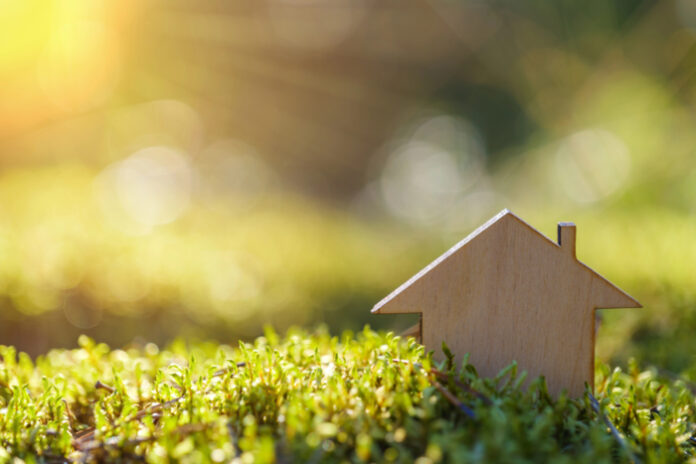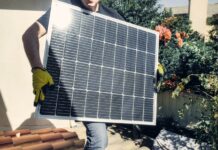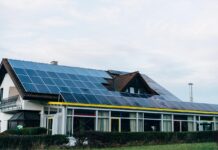By Dutch Mendenhall, Founder — RADD Companies
When people think of the most environmentally destructive industries, their minds may not go to real estate, even if it produces around 39% of the total global emissions. Many leaders in the real estate industry are increasingly focusing on the sustainability of their operations. They are hoping to reduce their negative impact on the environment with sustainability initiatives.a
Enhancing the sustainability of the real estate sector involves a clear step: integrating high-quality, energy-efficient materials. These include recycled components, energy-efficient lighting, sustainable insulation, and other elements that promise to substantially reduce the industry’s carbon footprint.
Sustainability Initiatives in Residential Real Estate
Using quality materials during construction is an essential sustainability initiative. This saves homeowners money on repairs in the long run. Even when the materials are environmentally superior in theory, their subpar quality compelling homeowners to raise their consumption can result in equally detrimental impacts.
The repair process can be costly and have a substantial carbon footprint from issues like the shipment of replacement parts, the use of repair equipment, and more. Thus, the use of high-quality materials from the get-go is paramount.
Many homeowners have found that reducing their dependence on air conditioning systems is the easiest way to make their homes more sustainable. According to the US Energy Information Administration, 250 billion kilowatt-hours of electricity were used for residential cooling in 2022 — roughly 6% of the total energy consumption of the United States.
A single A/C unit in a home can use as much as 3,000 watts an hour, depending on the unit’s size and other factors, such as the season. As such, alternatives like fans, which allow homeowners to cool their homes without as much energy consumption, are becoming more desirable for their sustainability benefits.
Some homeowners may also be surprised by the role of their windows in energy efficiency. Of course, the most important consideration for homeowners is to have functional windows, as they must be able to open and close to allow proper ventilation. Investing in quality blinds or curtains can help block sunlight, preventing as much sunlight from entering the home and creating an undesired natural heating effect. Some may even invest in low-emissivity windows with a thin coating reflecting infrared and UV light while allowing visible light to pass through, keeping homes cooler in the hot months and warmer in the cold ones.
Developing several green and energy-efficient standards also incentivizes homeowners to make their homes more sustainable, including those from the government in the form of rebates and tax credits that encourage homeowners with a financial bonus. Additionally, suppose a homeowner qualifies for one of these standards and is looking to sell their home. In that case, these certifications and sustainability initiatives can be a premium that allows them to ask for a higher price.
Sustainability in Commercial and Agricultural Real Estate
However, it isn’t just residential real estate in which we see a significant shift towards improved sustainability. Although commercial real estate has some important functions, it contributes greatly to environmental destruction. Steps taken in the commercial sector — and in agriculture — have the potential to make an enormous difference in the long-term sustainability of the real estate sector.
One significant way commercial real estate looks to improve its sustainability is through regenerative agriculture practices, which are developed with the principle of preservation in mind. The goal of regenerative agriculture is to preserve our world’s farmland for future generations so they can thrive.
Some core regenerative practices include reducing dependence on chemical fertilizers, pesticides, and herbicides and avoiding using environmentally destructive heavy machinery. In addition to improving soil health, these steps help reduce some of the broader consequences of farming on the environment.
Farmers who have invested in the welfare of their animals have also seen a substantial improvement in their sustainability efforts. According to one report, the factory farming industry is responsible for emissions equivalent to those created by 36.4 million cars on the road annually, so eliminating some of the most unsustainable factory farming practices could improve the environmental impact.
Practices that farmers are looking to improve include:
- Intense confinement: Because factory farming is done to raise large amounts of livestock, they are often kept in a small space for extended periods of time. This confinement can cause environmental issues, including concentrated waste, air pollution, and soil degradation.
- Animal branding: Not only is animal branding using hot irons generally considered unethical, but it can also contribute to environmental harm through increased stress on livestock and the chemicals used in the process. Farmers seek alternatives like freeze branding, which could offer a more ethical, less destructive way to identify livestock.
- Overuse of antibiotics: The factory farming industry is notorious for its overuse of antibiotics, which could contribute to the formation of antibiotic-resistant strains of bacteria and prove dangerous to human health and the environment.
With the combined efforts of the residential and commercial real estate sectors, we can be on our way to reducing the environmental impact of this sneakily destructive industry. Simple steps like reducing waste and energy consumption can go a long way in making the actions of this industry far less detrimental to our planet.
Find a Home-Based Business to Start-Up >>> Hundreds of Business Listings.

















































